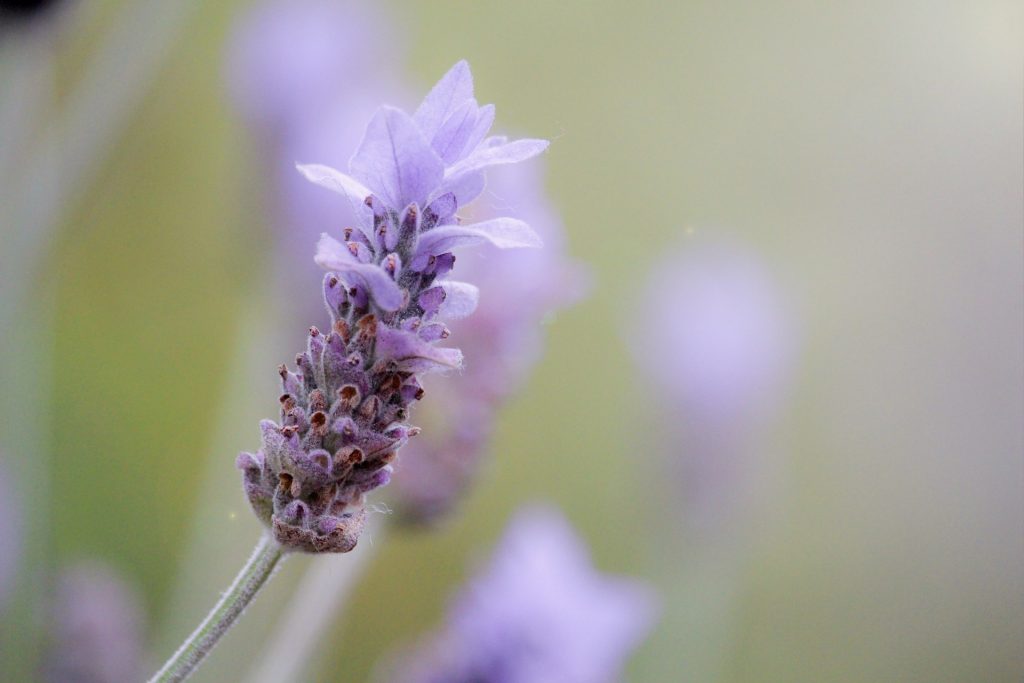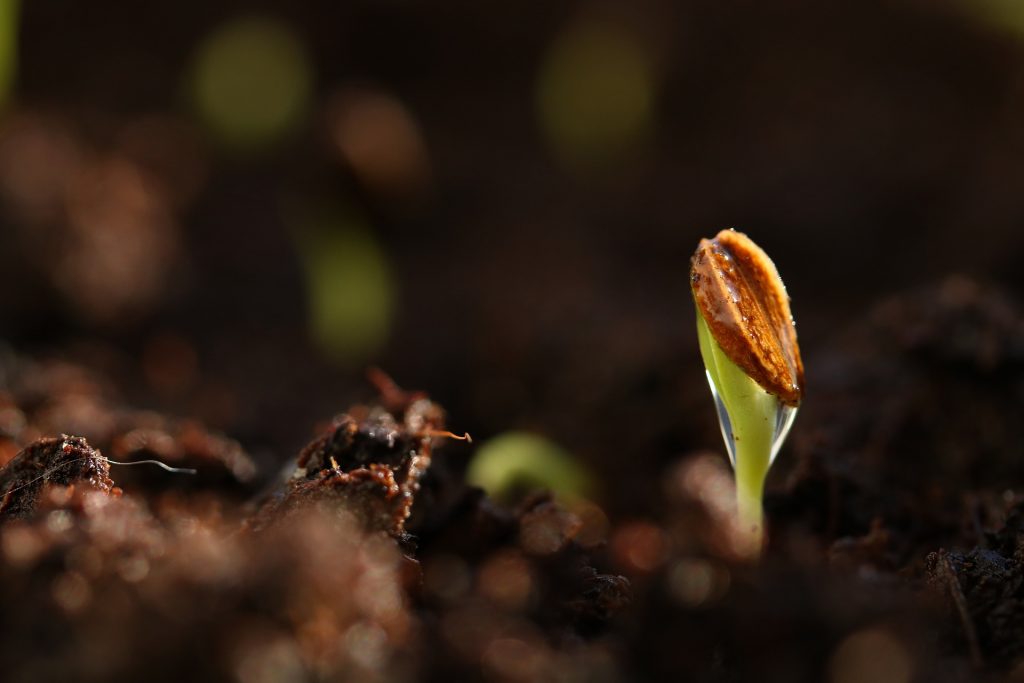Winter sowing seems to be picking up steam among hobby gardeners all over social media, but what is it, and WHY do it?
I decided to give winter sowing in milk jugs a try this year, and learned a lot about plants in the process! If getting a head start on Spring planting in the gloomy months of winter sounds appealing to you, read on!
First of all, why winter sow at all? Couldn’t you just start your seeds outside in the spring, or even inside under a light? Well, you can, but with some plants- including most native perennials- you won’t have much success. This method also comes with some convenient perks we’ll discuss shortly.
Have you ever bought a package of rosemary, milkweed, or lavender seeds, only to have few if any sprouts turn up? There’s a reason for that, and no, it’s not you or a lack of a green thumb!
Many plants, such as wildflowers native to the temperate regions of North America (areas where winter is cold enough to kill vegetation), will not germinate without an extended period of moisture and low, freezing temperatures.
This required low temperature and high moisture period is called stratification, and it’s one of many evolutionary functions plants use to survive. This process starts a chemical reaction that releases the plant embryo from dormancy.

You can simply put your lavender and rosemary seeds in a baggy of damp potting mix in the fridge for a couple months before planting, by the way.
Stratification ensures that the seeds dropped by mature plants do not immediately germinate in the warm autumn sun, only to be decimated by the first frosts of winter.
Because seeds only contain about 2% water, they are not damaged by this water expanding as it freezes over winter, however the foliage of a plant contains 95% water. This is why gardeners fear unexpected frost! With that much water to expand, leafy plant matter is torn to shreds!
Another example of this evolutionary insurance policy that you may encounter in the native plant world is called scarification, or marring of the protective seed coat by outside intervention.
In nature this might take the form of a thick seed coat being worn down by the digestive enzymes in an animal’s stomach, and dispersed back to the earth in their waste, or simply dissolved by just the right amount of rain.

Gardeners often achieve this effect by gentle filing or scraping the seed before sowing it.
Additionally, many plants will only germinate when exposed to the right amount and hours of light and darkness that match the plants target growing season.
When we winter sow, the seeds are being exposed to the correct seasonal temperatures and light to have the best chance of germination.
In simpler terms, plants are really smart and they have their reasons! Work with them, not against them, and you might find yourself with less work this spring!
Now you may still be wondering, why not just plant the seeds directly in the ground? In my opinion, this is where winter sowing in plastic jugs really shines. Seeds sown directly in the garden are subject to being washed around in the rains, dug up or eaten by wildlife, or trampled by careless humans.
With this method of winter sowing, you’re getting far more control of your garden design, with less time spent trying to tell seedlings apart as they sprout among other flora in the garden.

Once germinated, the tender foliage of these plants are at risk of annihilation should a surprise late frost rear its ugly head. The jugs act as mini greenhouses to protect the plants, while still allowing them the temperature, water, and light they require.
An added perk to this method is total avoidance of the hassle of “hardening off” indoor-started seedlings. This process can be tedious and it only takes one instance of falling asleep early watching Netflix on a chilly night to kill off your whole seed tray!
Having these precious baby plants in a perfectly mobile container, whose top can be opened for light and warm spring air, closed against the chill of night, or in emergencies, moved indoors safe from weather extremes makes all the sense in the world to this control freak!
Fellow sufferers of SAD Seasonal Affective Disorder) will love this mid-winter project, you can begin laying the tracks for your garden right after the holidays in most regions!
You’ll better guarantee your early crop and get to brag about your beautiful seedlings before your comrades even start theirs! Be honest, you know you’ll enjoy that just a little! There’s no judgement here.
OK, if you’re as sold on winter sowing as I am, let’s start making our little mini-greenhouses! Check out the video for a step-by-step!
Here’s What You’ll Need:
- Milk jug / plastic bottles
- Take out tins
- rubbermaid /clear totes
- Well-draining potting mix
- X-acto knife or other sharp/safe tool to cut plastic
- Hole-punching tool (heat up a screwdriver or sharp poking tool)
Directions:
- Cut the jug as shown in the photo, just below any handles the container may have. Leave an inch or two under the handle uncut to form a “hinge”. Get rid of the cap, you won’t need it.
NOTE: Leaving the cap on saved jugs will make the jug smell nasty, so chuck the cap before you store them. - Punch or melt holes in the bottom of the jug, enough so the soil can freely and quickly drain. You don’t want water sitting in these any more than you would in a potted plant! You may also want to add a few more ventilation holes around the top of the container.
- Fill the bottom of your new mini-greenhouse jug with well-draining potting mix or compost and moisten it with water if you haven’t already. You can make sure you have adequate drainage here, the water should move through the soil and holes freely.
- Plant seeds according the depth noted on the back of the packet being mindful that some seeds require light to germinate. Each plant embryo only contains so much energy to get it to the surface where it will use photosynthesis to get more. If you plant too deep, it may run out before it makes it out of the potting mix.
- Close the greenhouse, label it**, and seal about 80% of the cut part closed with duct tape. You don’t want it airtight, just securely closed.
- Place the containers in a place that isn’t blasted with the harshest hours of sun as this can be detrimental later in the season.
**Paint markers seem to be the best for labeling as sharpies will fade, I recommend keeping a chart as well of which container has what.
What I’m Winter Sowing in Zone 6b:
- Lemon Beebalm/Purple Horsemint Monarda citriodora (Non-Native to NE, A) Corner Sun Summer 2-4ft (purple)
- Native Wildflower Mix (N, P)
- Verbena Bonariensis (South America) Draining Soil, Corner Sun, Can spread too much Summer-Frost 2-5ft (purple)
- Zinnia, Mixed (A)
- Mexican Sunflower (Mexico, S. A.)Tithonia rotundifolia (P) Draining Soil, Sun Summer 4-6ft (red)
- Milkweeds: Purple, Whorled, Common, Poke, Swamp (Asclepias purpurascens, verticillata, syriaca, exaltata, and incanata) + Butterfly *monarch host
- Golden Alexander Zizia aureataptera (N, P) *black swallowtail host shade garden spring 1-3ft (y)
- Rudbeckia Mix (N, P)
- Northern Sea Oats Chasmanthium latifolium (Non Native to NE, P, grass) shade garden, moist soil late summer-winter interest 3-4”
- Maximilians Sunflower Helianthus maximilianii ( P) wherever late summer-frost 2-4ft
- Wild Senna Senna hebecarpa (N, rare, P) *butterfly host shade garden summer 5ft
- Joe Pye Weed Eutrochium purpureum (N, rare, P) summer to fall 5ft
- Obedient Plant Physostegia viginiana (introduced, P) summer, 1-5ft (purple-pink)
- Showy Goldenrod Solidago speciosa (N, rare, P) late summer-fall 2-6ft (yellow)
- Sneezeweed Helenium autumnale (Naturalized in New England, P) *late blooming late summer-fall 2-6ft (yellow) named by Linnaeus for Helen of Troy, said to have sprung from where her tears fell
- Blue Mistflower / Wild Ageratum Conoclinium coelestinum (Non-Native to NE, P) late summer 2-3ft (blue)
- Blazing Star / Gayfeather Liatris spicata (Naturalized, P)
Resources:
Videos:
Plant-Based Large Family- Winter Sowing Year 4 https://www.youtube.com/watch?v=wYZ8ve8-Xwk&t=266s
The Rusted Garden’s How-To on Winter Sowing
Books:
Botany for Gardeners (Revised Edition) by Brian Capon https://amzn.to/37eXmOj
What a Plant Knows, A Field Guide to the Senses by Daniel Chamovitz
https://amzn.to/2NEqc2X
*Tip: you can take David’s free course on plants here: https://www.coursera.org/learn/plantknows
Blogs:
Winter sowing milkweed:
https://monarchbutterflygarden.net/winter-sowing-milkweed-seeds-checklist/
Native Perennials from Seed:
https://www.ecolandscaping.org/09/designing-ecological-landscapes/native-plants/growing-in-the-off-season-native-perennials-from-seed/
What to Winter Sow and When?: https://www.agardenforthehouse.com/2012/01/what-to-winter-sow-and-when/
2 Comments
Congratulations! Great job! Such an abundance of information. Way to go young lady!
Great information in both the blog and video! I’m so seriously impressed I can’t wait to try it and share with others. I will of course give you credit!